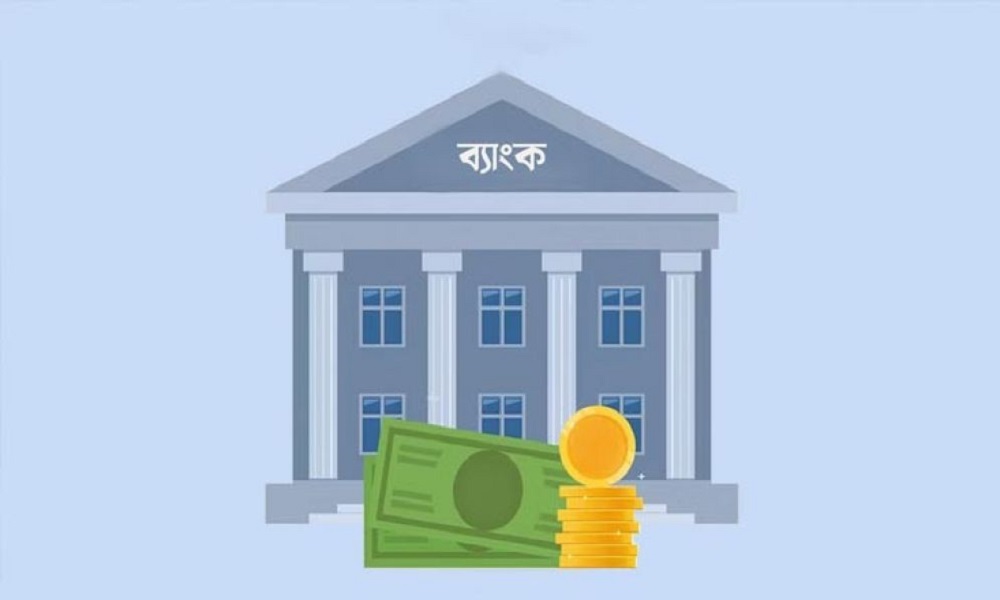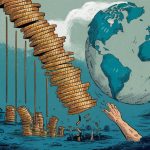
Central Bank Policy Interest Rate: Despite Decreasing Globally, Increasing in Bangladesh
Last Updated on November 11, 2024 5:11 am
For almost two and a half years, many countries in the world’s major economies have brought inflation rates under control by increasing central bank policy interest rates. As a result, they have started reducing policy interest rates. Many countries have already reduced policy interest rates by one point. They have announced to reduce them by one point more in the future.
But Bangladesh has increased policy interest rates by following a strict monetary policy for 3 fiscal years to control inflation rates. This has increased all types of interest rates in the market. But the inflation rate has not yet come under control. This rate is still close to double digits. While policy interest rates are decreasing globally, Bangladesh is still increasing this rate. The latest increase in this rate has been one point since October 27.
Sources say that the Central Bank of Bangladesh used to consider the bank rate as the policy interest rate earlier. Now the Treasury Bill Repurchase Agreement or Repo interest rate is considered as the policy interest rate. Although the policy interest rate has magical results in controlling inflation in other countries, it is not very effective in Bangladesh.
Since the beginning of 2022, when the global inflation rate increased due to the global recession, many countries have already brought inflation under control by increasing the policy interest rate. As a result, they are now increasing the policy interest rate to speed up economic activities. But Bangladesh has been increasing the policy interest rate since May 2022. At that time, the rate was 5 percent. Now it has increased to 10 percent. Although the policy interest rate has been increased for the last two and a half years, the inflation rate has not decreased. On the contrary, the rate has increased further. In 2020, the inflation rate was around 5 percent.
In May 2022, it increased to 7.42 percent. In July, it increased to a maximum of 11.66 percent. In September, it decreased to 9.92 percent. In October, it increased again to 10.87 percent.
The central bank believes that the increase in the policy interest rate has reduced the flow of money in the market. Spending in unnecessary sectors has decreased. The central bank has stopped printing money and releasing it into the market. The dollar price has been kept stable. Due to these reasons, the inflation rate has decreased slightly.
According to a research report by Bangladesh Bank, the price gap between the marginal stage of daily commodities and the wholesale and retail stages is very high. This indicates that there is a flaw in market management. If intervention is made to resolve this flaw, the inflation rate will decrease slightly more.
According to sources, the central bank adopted a policy of reducing interest rates to stimulate the economy by increasing investment during the Corona period. On July 30, 2020, the repo rate was reduced from 5 percent to 4.75 percent. At that time, the inflation rate was around 5 percent. When the Russia-Ukraine war began in February 2022, a global recession occurred.
The recession gradually increased. Bangladesh also started to be affected by it. Inflation continued to increase. As a result, the central bank started raising the policy interest rate again from May 2022 to control the inflation rate. On May 29, this rate was increased again to 5 percent. On June 30 of the same year, this rate was further increased to 5.5 percent. The monetary policy announced in July was made contractionary. The policy interest rate was increased. On October 2 of the same year, the repo interest rate was further increased to 5.75 percent. But the inflation rate did not decrease.
From January 16, 2023, it was further increased to 6 percent. From July 1, it was further increased to 6.5 percent. From October 5, it was increased again to 7.25 percent and from November 27, it was increased to 7.75 percent. Even then, the inflation rate was not controlled.
From January 21 of this year, the repo interest rate was increased one more time to 8 percent. From May 9, it was further increased to 8.5 percent. The current governor decided to tighten the monetary policy further after taking charge. He announced that the repo interest rate would be increased to 10 percent in three phases. In three phases, he increased it from 8.5 percent to 10 percent until October 27. After the inflation rate increased in July, it decreased slightly in August-September.
In this context, Dr. Mustafa K. Mujeri, former Director General of the Bangladesh Institute of Development Studies (BIDS), said, “In Bangladesh, monetary policy instruments generally do not work much. Because the influence of the black economy is high here. That is why monetary policy instruments cannot reduce the flow of money in the market much. Therefore, it is not possible to reduce inflation by controlling the money supply. Controlling the money supply is a tool to reduce inflation. Along with this, more emphasis should be placed on market supervision. Then this rate will decrease.
A report by the central bank said that the production and supply system of goods was disrupted due to student and public agitation in July-August. Then, production was disrupted due to floods in August and September. These reasons also had a negative impact on the market.
Sources said that the government’s central and local administration systems are still not working properly. Due to this, the supervision system has become weak. Due to which, proper steps cannot be taken due to the lack of information on the production and supply system.
According to a report by the IMF, many countries have now been able to control the rise in inflation by coping with the impact of the global recession. Due to this, they have started to lower the interest rates on loans from rising. In the United States, the Federal Reserve Bank reduced the policy interest rate from 5.5 percent to 5 percent in September. They have predicted that this rate will be reduced further in the future. In the meantime, the food inflation rate in the United States has decreased to 2.1 percent. It had reached a peak of about 10 percent in 2022.
In June, the European Union’s central bank cut three types of policy interest rates. Among them, the deposit facility rate or DFR was reduced from 4 percent to 3.75 percent. The interest rate on the main refinancing facility was reduced from 4.5 percent to 4.25 percent. The interest rate on the marginal lending facility was reduced from 4.75 percent to 4.50 percent. Food inflation in European Union countries has now decreased to within 2 percent. It had previously exceeded 10 percent.
In August, the UK’s central bank, the Bank of England, cut its policy base interest rate from 5.25 percent to 5 percent. Food inflation in the country has fallen to 1.3 percent. It had previously exceeded 10 percent.
Brazil cut its policy interest rate from 13.75 percent to 13.25 percent in August last year. These countries have taken steps to further reduce policy interest rates. Food inflation in the country has fallen to 4.6 percent. It had previously exceeded 12 percent.
Mexico’s central bank cut its policy cash rate from 11.25 percent to 11 percent in March.
In June, food inflation in Bangladesh peaked at 14.1 percent. In August, it fell to 11.4 percent. In September, it fell to 10.40 percent. In October, it rose again to 12.66 percent. But this rate has been in double digits for a long time. As a result, consumers are worried about food.
India’s central bank, the Reserve Bank of India (RBI), last raised the policy interest rate from 6.15 percent to 6.5 percent in February last year. That rate is still in effect. Although they did not raise the policy interest rate, they did not reduce it. Food inflation in the country has come down to 5.3 percent. Earlier, it was more than 8 percent.
Sri Lanka, which had become economically bankrupt, has already turned around. It has repaid the entire loan taken from Bangladesh. The food inflation rate has also come down to 0.8 percent.






